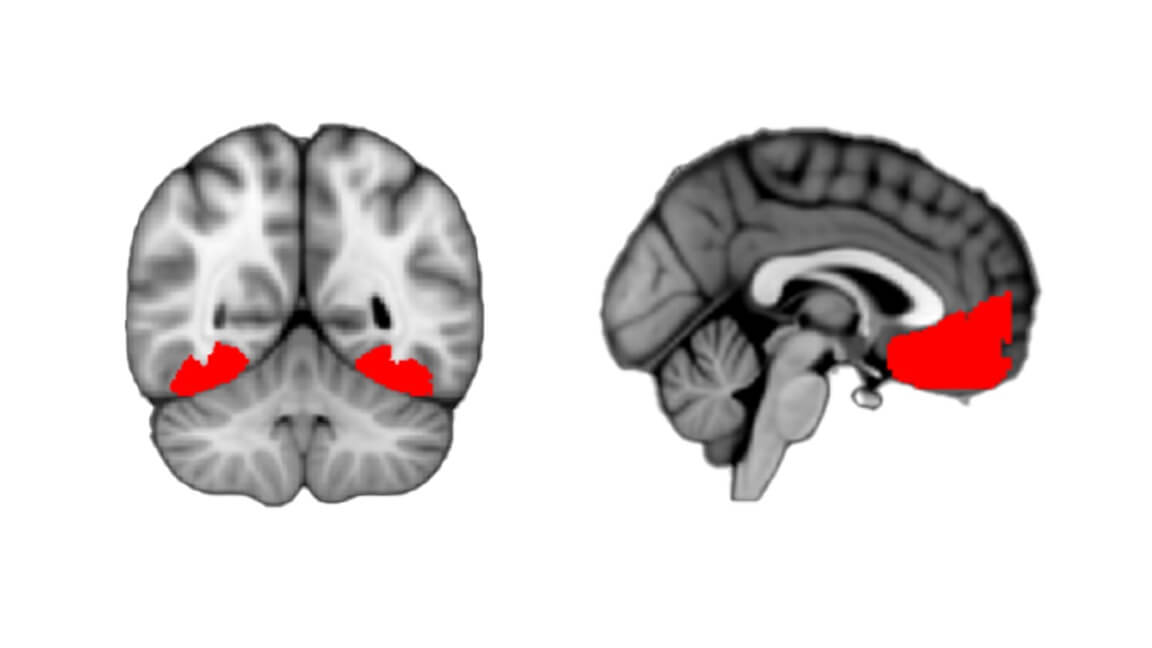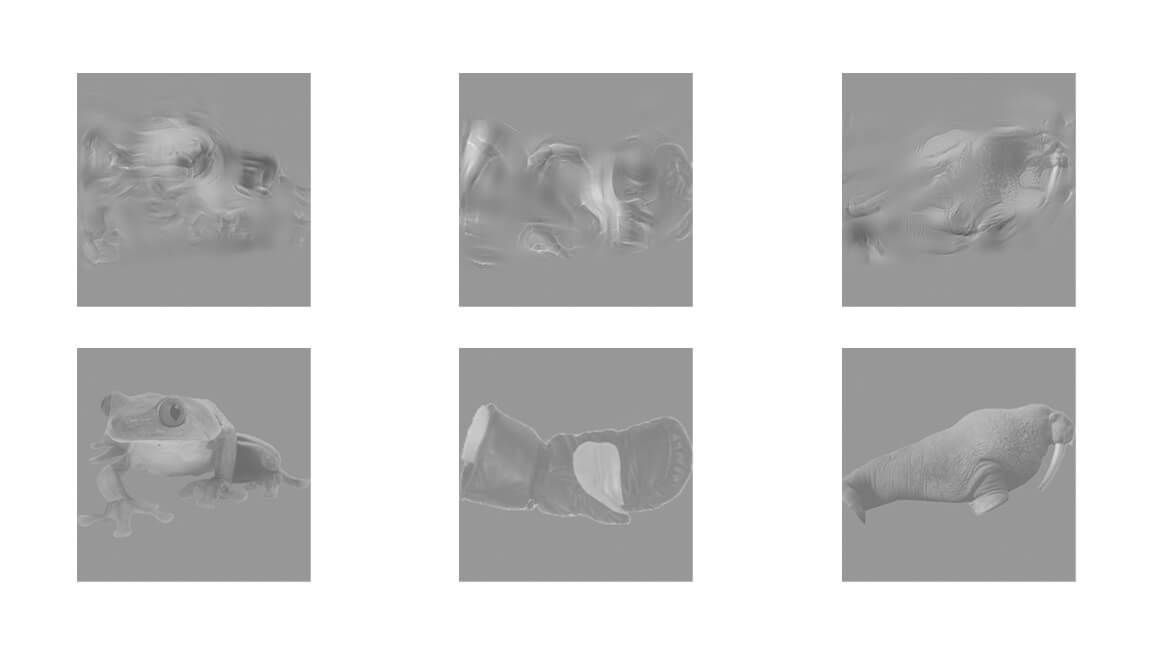
(Photo by Paula Corberan on Unsplash)
For the first time, researchers link people’s subjective feelings of curiosity to how their brains physically represent them
NEW YORK – You look up at the clear blue sky and see something you can’t quite place. Is it a balloon? A plane? A UFO? You’re curious, aren’t you?
A research team based at Columbia’s Zuckerman Institute has been able to observe for the first time what happens in the human brain when feelings of curiosity like this arise. In a study published in Journal of NeuroscienceScientists have revealed areas of the brain that appear to assess the degree of uncertainty in visually ambiguous situations, giving rise to subjective feelings of curiosity.
“Curiosity has deep biological origins,” said corresponding author Jacqueline Gottlieb, Ph.D., a senior research scientist at the Zuckerman Institute. The primary evolutionary advantage of curiosity, she added, is that it encourages living things to explore their world in ways that help them survive.
“What’s unique about human curiosity is that it drives us to explore much more broadly than other animals, and often simply because we want to discover things, not because we’re looking for material reward or survival advantage,” said Dr. Gottlieb, who is also a professor of neuroscience at Columbia’s Vagelos College of Physicians and Surgeons. “It drives us to be very creative.”
Dr. Gottlieb was joined in this research by Michael Cohanpour, PhD, a former Columbia graduate student (now a data scientist at dsm-firmenich), and Mariam Aly, PhD, also formerly at Columbia and now an interim associate professor of psychology at the University of California, Berkeley.


In the study, the researchers used a widely used, noninvasive technology to measure changes in blood oxygen levels in the brains of 32 volunteers. Called functional magnetic resonance imaging (fMRI), the technology allowed scientists to record how much oxygen different parts of the subjects’ brains were consuming while they looked at images. The more oxygen a brain region is consuming, the more active it is.
To uncover the brain areas involved in curiosity, the research team presented participants with special images called texforms. These are images of objects, such as a walrus, a frog, a tank, or a hat, that have been distorted to varying degrees to make them more or less difficult to recognize.
The researchers asked participants to rate their confidence and curiosity about each text form and found that the two ratings were inversely related. The more confident subjects were that they knew what the text form represented, the less curious they were about it. Conversely, the less confident subjects were that they could guess what the text form was, the more curious they were about it.


Using fMRI, the researchers then observed what happened in the brain while the subjects were presented with texforms. The brain scan data showed elevated activity in the occipitotemporal cortex (OTC), a region just above the ears that has long been known to be involved in vision and recognizing object categories. Based on previous studies, the researchers expected that when they presented participants with bright images, this brain region would show distinct patterns of activity for animate and inanimate objects. “You can think of each pattern as a ‘barcode’ identifying the texform category,” Dr. Gottlied said.
The researchers used these patterns to develop a measure, which they called “OTC uncertainty,” of how uncertain this cortical area was about the category of a distorted text form. They showed that when subjects were less curious about a text form, their OTC activity corresponded to only one barcode, as if it clearly identified whether the image belonged to the animate or inanimate category. In contrast, when subjects were more curious, their OTC showed characteristics of both barcodes, as if it could not clearly identify the category of the image.
Two regions in the front of the brain were also active during the texform presentations. One is the anterior cingulate cortex, which previous studies have implicated in information gathering. The other is the ventromedial prefrontal cortex (vmPFC), which is involved in tracking a person’s subjective perceptions of value and trustworthiness in different situations. In the new study, both areas were more active when subjects reported being more certain about a texform’s identity (and thus less curious about seeing the image clarified).
This is really the first time we can connect the subjective feeling of curiosity about information to how your brain represents that information.
Importantly, Dr. Gottlieb said, vmPFC activity appears to provide a neurological bridge between the subjective feeling of curiosity and the OTC measure of certainty. It’s as if this region is reading the uncertainty encoded by the distributed pattern of activity in the OTC and helping a person decide whether to be curious about the textual form.
“This is really the first time we can link the subjective feeling of curiosity about information to how your brain represents that information,” Dr. Gottlieb said.
The study has two important implications, Dr. Gottlieb said. First, although the study focused on perceptual curiosity about visual stimuli, people experience other forms of curiosity, such as curiosity about general knowledge questions and facts (for example, how tall is the Eiffel Tower?) or social curiosity (what restaurant did my friends go to last night?). One interesting possibility of the study, she noted, is that the mechanism she uncovered could generalize to other forms of curiosity. For example, an fMRI study looking at more or less recognizable sounds might show that auditory areas of the brain convey uncertainty about the sound and that the vmPFC reads that uncertainty to determine curiosity.
A second possibility Dr. Gottlieb considers is that the findings could have diagnostic and even therapeutic implications for people suffering from depression, apathy or anhedonia (inability to feel pleasure), which are conditions often marked by a lack of curiosity.
“Curiosity involves a kind of enthusiasm, a willingness to expend energy and study what’s around us. And it’s intrinsically motivated, meaning no one pays you to be curious; you’re curious simply because you hope something good will happen when you learn,” Dr. Gottlieb said. “These are just some of the amazing things about curiosity.”
Press release provided by the Zuckerman Institute at Columbia University.
The paper, “Neural representations of sensory uncertainty and confidence are associated with perceptual curiosity,” was published online in Journal of Neuroscience July 5, 2024. The full list of authors includes Michael Cohanpour, Mariam Aly, and Jacqueline Gottlieb.
The authors declare no conflict of interest.